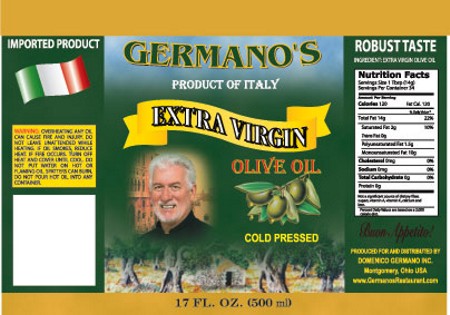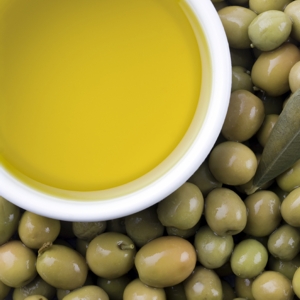We hear, at regular intervals, from pro cooks, celeb chefs and food bloggers, that Olive Oil is hands down the best oil for us to use in all applications. But most of us are in a quandry about which grade of Olive Oil to use. And why have ‘grades’ in the first place?
 Olive Oil fraud is rampant in Europe. To make sure you are getting real
Olive Oil fraud is rampant in Europe. To make sure you are getting real
EVOO for your money, always look for ‘Product of Italy’ on the label!
If you’re Italian…
… You’ll be intimately acquainted with the ins and outs of Olive Oil. You won’t even have to think before reaching for the appropriate grade of the golden nectar. Whether you’re dressing a salad, frying up some Breaded Eggplant, creating a pizza crust or prepping a pan of Foccacia, you’ll need the proper Olio de Oliva to do it right.
Why different grades?
Olive Oil is pressed from the fruit of the Olive tree. We’re all familiar with olives – in many varieties and presentations. Small or Jumbo. With or without pits. Stuffed or plain. Green or Black.
But Olive Oil is generally produced from green, less-ripe olives of a few choice types: Picual (Spain), Cornicabra (Spain), Koroneiki (Greece), Kalamata (Greece), Leccino (Italy) and Pendolino (Italy).
The issue of grades arises during the production of the oil, and reflects different amounts and types of processing applied.
Extra Virgin Olive Oil (EVOO)
“The highest grade of virgin olive oil, made using a cold process without any refining methods or solvents,” says Samira, at Alphafoodies.com. “This olive oil is the least processed, with the best flavor (often with a fruitiness/spiciness and ‘full-bodied’ flavor).” EVOO is always the product of the first pressing of the olives.
This is not only the most versatile grade of Olive Oil, but the most expensive. You can use it to advantage in any vinaigrette or as a top-dressing for any dish. It’s also the best suited to cooking, as it resists higher (sautéeing) temperatures better than the lower grades. Also… This is the grade you want to use when drinking Olive Oil as an elixir.
Virgin Olive Oil (VOO)
“Any oil made using mechanical [but] not heat or chemical treatments. Virgin olive oils contain the highest levels of polyphenols, too. This is the antioxidant [family] responsible for most of its health benefits.” From the second and later pressings of the olives.
Usually significantly less expensive than EVOO. But you still get considerable Olive Oil flavour. Use it in dressings, marinades and recipes that call for Olive Oil as an ingredient. Of course, you can also cook with it, as you would EVOO.
Pure Olive Oil (OO)
This base grade (the lowest approved for human consumption by most international product standards) is a blend of Virgin and Refined oils. The label will simply say, ‘Olive Oil’.
“Oil that has been refined to remove taste, color, and odor.” The process usually employs both chemical treatments and filtration. “Many products labeled as ‘pure’ olive oil are usually primarily refined olive oil with a small percentage of virgin olive oil.” The VOO is added to give the product a hint of Olive flavour.
Pure Olive Oil is cheaper, again, than VOO. But it is also less flavourful. You can use this grade for cooking where you want a more neutral flavour.
Cooking with Olive Oil
Always keep the temperature relatively low. Cook on low or medium heat and use only about a tablespoon full / 15 ml of oil. Heat until the oil looks shiny on top. But make sure it doesn’t start to smoke! The traditional cooking fat for all Italian pan-fried delicacies.
My take
Olive Oil is one of three types I keep by my stove. The other two are Canola and Corn Oil. The former I use for high temperature cooking, and the latter I use mainly in baking. Both of those oils have a mild or neutral flavour. But if it’s flavour you want, go with Olive Oil!
~ Maggie J.

